How to Feed Your Pet a More Natural Diet
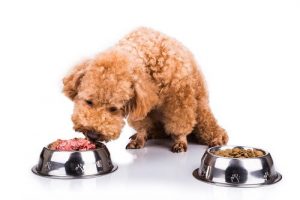
They say that we are what we eat, and this is also true for pets. A living being’s diet must be nutritionally complete and provide everything necessary for it to be healthy on the outside and inside. There are plenty of natural, chemical-free foods available on the market, but how can you feed your pet an over-all more natural diet?
How to Feed Your Pet a More Natural Diet
On previous articles you have learned about the benefits of the BARF diet for cats and dogs. Although they are animals, remember that they are living beings that can eat in a very similar way as humans do. However, this is only as long as you avoid giving them certain harmful foods.
There are tons of fruits and vegetables that are good for your furry friends. You simply need to know which ones can benefit them, and which ones won’t. In My Animals everyone has a good understating that it’s always a good idea to provide your pet a more natural diet.
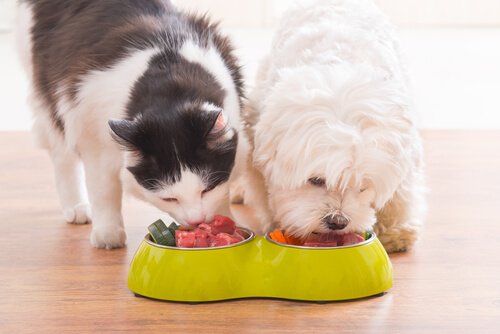
What Are the Best Natural Foods for Pets?
Chicken
Even though many processed foods have chicken as a main ingredient, making your pet homemade chicken will provide them with an extra protein boost. Just remember that you should never feed pets raw meat. Instead, it should be cooked or grilled, without fat or salt.
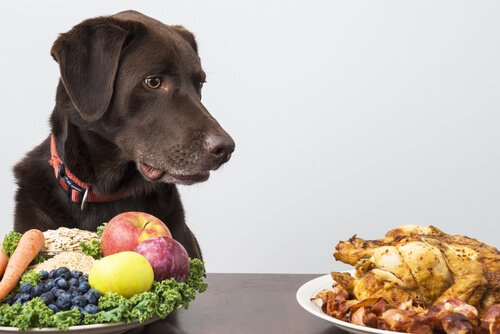
Both cats and dogs love chicken. However, be sure and remove all the meat from the bones before feeding it to your pet. Not only can bones cause problems when ingested, but your pet could choke on one and die.
Fish
In spite of this meat’s being known to be fed to cats, dogs are also huge fans of eating fish. Not only does it provide them protein, but it also has essential fatty acids that benefit their organisms. Just like chicken, you should always cook your dog’s fish without fat or salt and remove any bones from the fish before feeding it to your pet.
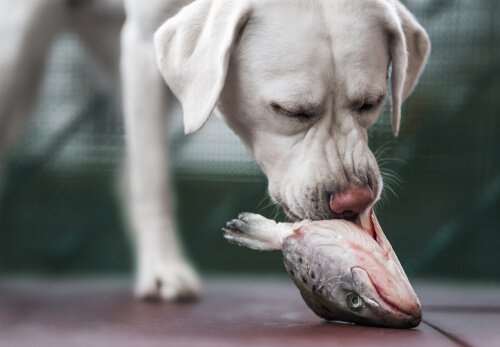
Fruit and Rice
Rice or pasta combined with certain vegetables without adding any garlic and onion, are good for your pet. Use olive oil if you want to add some sauce. However, don’t feed your dog tomato-based sauces and foods at all costs.

Apples (without seeds) and bananas are good fruits for cats and dogs. However, be sure to avoid feeding your pet grapes, raisins, cherries, currants and avocados.
Yogurt
Everybody knows that cats like milk, but dogs love it too! In fact, if a dog sees you eating a yogurt, it will immediately go over and sit by your side in order for you to let them lick the empty carton. Even though you should not feed your dog yogurt very often, it can be a wonderful treat for dogs, and will help them be more attracted to their food.
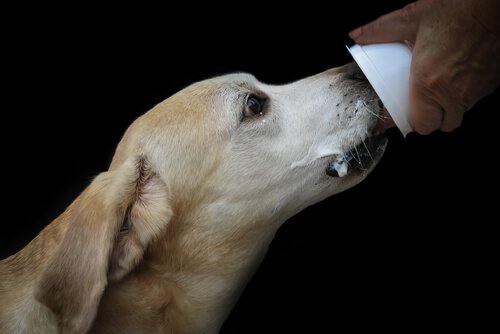
Vegetables
There are lots of vegetables that are good for pets, but veggies should not be the main ingredient of their diet. Animal-derived proteins, such as beef and fish, must be a dog’s main source of nutrition. Mixing vegetables and meat, however, will create a delicious meal that will have your dog licking its chops long after he has finished eating.

Remember that, just like chicken and fish, vegetables should be well cooked and tender so that your pet does not have a hard time chewing and digesting them.
Peanuts
Believe it or not, peanuts are a common favorite snack among pets. Due to their high fat content, peanuts are not something that you should give your dog very often. However, you can make your dog some homemade cookies using peanuts as the main ingredient! They are a fantastic snack for your pet.
The easiest way to make them is with natural peanut butter and wheat flour. Add a little water, shape the cookies however you like, and bake them at 180 degrees Celsius. You won’t believe how much your dog will love them!
As you can see, it’s easy to feed your pet a more natural diet, all while avoiding the chemicals and processing in commercial foods and treats. Ultimately, feeding your pet a more natural diet is always the best choice.
They say that we are what we eat, and this is also true for pets. A living being’s diet must be nutritionally complete and provide everything necessary for it to be healthy on the outside and inside. There are plenty of natural, chemical-free foods available on the market, but how can you feed your pet an over-all more natural diet?
How to Feed Your Pet a More Natural Diet
On previous articles you have learned about the benefits of the BARF diet for cats and dogs. Although they are animals, remember that they are living beings that can eat in a very similar way as humans do. However, this is only as long as you avoid giving them certain harmful foods.
There are tons of fruits and vegetables that are good for your furry friends. You simply need to know which ones can benefit them, and which ones won’t. In My Animals everyone has a good understating that it’s always a good idea to provide your pet a more natural diet.

What Are the Best Natural Foods for Pets?
Chicken
Even though many processed foods have chicken as a main ingredient, making your pet homemade chicken will provide them with an extra protein boost. Just remember that you should never feed pets raw meat. Instead, it should be cooked or grilled, without fat or salt.

Both cats and dogs love chicken. However, be sure and remove all the meat from the bones before feeding it to your pet. Not only can bones cause problems when ingested, but your pet could choke on one and die.
Fish
In spite of this meat’s being known to be fed to cats, dogs are also huge fans of eating fish. Not only does it provide them protein, but it also has essential fatty acids that benefit their organisms. Just like chicken, you should always cook your dog’s fish without fat or salt and remove any bones from the fish before feeding it to your pet.

Fruit and Rice
Rice or pasta combined with certain vegetables without adding any garlic and onion, are good for your pet. Use olive oil if you want to add some sauce. However, don’t feed your dog tomato-based sauces and foods at all costs.

Apples (without seeds) and bananas are good fruits for cats and dogs. However, be sure to avoid feeding your pet grapes, raisins, cherries, currants and avocados.
Yogurt
Everybody knows that cats like milk, but dogs love it too! In fact, if a dog sees you eating a yogurt, it will immediately go over and sit by your side in order for you to let them lick the empty carton. Even though you should not feed your dog yogurt very often, it can be a wonderful treat for dogs, and will help them be more attracted to their food.

Vegetables
There are lots of vegetables that are good for pets, but veggies should not be the main ingredient of their diet. Animal-derived proteins, such as beef and fish, must be a dog’s main source of nutrition. Mixing vegetables and meat, however, will create a delicious meal that will have your dog licking its chops long after he has finished eating.

Remember that, just like chicken and fish, vegetables should be well cooked and tender so that your pet does not have a hard time chewing and digesting them.
Peanuts
Believe it or not, peanuts are a common favorite snack among pets. Due to their high fat content, peanuts are not something that you should give your dog very often. However, you can make your dog some homemade cookies using peanuts as the main ingredient! They are a fantastic snack for your pet.
The easiest way to make them is with natural peanut butter and wheat flour. Add a little water, shape the cookies however you like, and bake them at 180 degrees Celsius. You won’t believe how much your dog will love them!
As you can see, it’s easy to feed your pet a more natural diet, all while avoiding the chemicals and processing in commercial foods and treats. Ultimately, feeding your pet a more natural diet is always the best choice.
This text is provided for informational purposes only and does not replace consultation with a professional. If in doubt, consult your specialist.








